Discover Negarestan Garden's Historic Charm
Negarestan garden is one of the most charming and beautiful gardens you will see in Tehran. Amidst the hustle and bustle of the city, you can take refuge in this garden for a long time and refresh your soul with the nature and architecture of this garden.
The construction year of this garden dates back to 1802. It is interesting to know that this garden has witnessed the footsteps of great figures and famous Iranian artists such as Mirza Abolqasem Qaem Maqam Farahani, Kamal-Ol Molk and many other historical figures.
Today, it attracts many tourists from around the world with its unique blend of architectural beauty and historical resonance. Join us to learn everything you need to know about the Negarestan garden including its history, entrance fee, opening time, location and how to get there.
History of Negarestan Garden
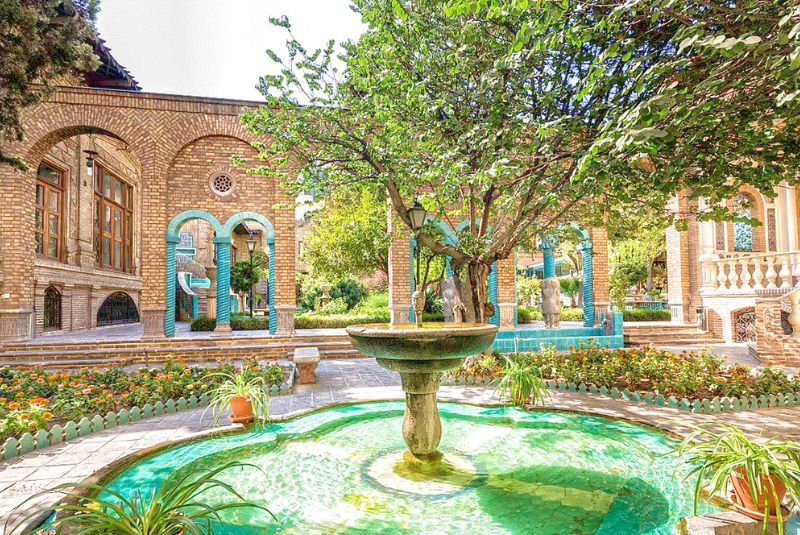
Negarestan Garden holds a rich history dating back to its construction in 1802 by order of Fath-Ali Shah, the second Shah of Iran in Qajar dynasty. Originally intended as a summer residence, the garden was adorned with numerous paintings featuring portraits of kings and the signatures of renowned artists such as Johnny Mirza, Mirza Baba, and Abdullah Khan. This artistic influence led to the garden's name, "Negarestan," meaning "a place full of pictures" in Farsi.
Throughout the years, Negarestan Garden played host to significant events. In 1834, the inauguration ceremony of Mohammad Qajar, the third Qajar Shah of Iran, took place within its grounds. Notably, the ceremony featured the "Peacock" throne, which is now exhibited at the National Jewelry Museum.
Under Mozaffar Ad-Din's reign, the garden expanded its purpose to accommodate an agriculture school, a school of fine arts, and a religious school. Later, in 1928, one of the garden buildings became an educational center for teachers, and in 1936, a hall was transformed into a library.
The University of Tehran also utilized parts of Negarestan Garden for their courses when it commenced operations in 1934. Eventually, in 1958, the garden became the property of the Social and Cooperation Research Institute of Iran.
Over time, some buildings within the garden were destroyed, leading to a reduction in its size. In 1971 and 1986, there were plans to demolish the garden due to its deteriorated state.
However, the collective of the University of Tehran declared the remaining portion as a museum dedicated to the university's history and glory, ensuring its preservation.
The current Negarestan Museum and Garden, encompassing an area of 43,200 square meters, represents a fraction of its original vastness. Its southern entrance, a two-story structure, leads visitors into the garden adorned with spacious rooms featuring exquisite plasterwork.
The centerpiece of the garden is the mansion of the reservoir, housing the Hall of Salam (Greetings). Throughout its history, Negarestan Garden has witnessed numerous official and specialized ceremonies, boasting delightful mansions, the Salam Hall, Qalamdan Hall, and several reservoirs, all adorned with exceptional design and craftsmanship.
Noteworthy is the presence of a bathhouse within the secluded garden, once adorned with intricately carved stone and marble. It is believed that Qaem Maqam Farahani met his tragic fate within this bathhouse.
Among the various buildings from the Qajar era, only the reservoir remains, now transformed into the National Arts Museum. The garden has been a sanctuary for sculptures and paintings since the reign of Fath-Ali Shah and his courtiers. Additionally, during Mozaffar ad-Din Shah's rule, Kamal ol-Molk supervised the establishment of the first school on the premises.
Today, Negarestan Museum and Garden stands as a testament to Iran's rich cultural heritage, offering visitors a glimpse into the artistic and historical significance of this enchanting place.
| Related: What is A Persian Garden?
Famous Figures in Negarestan Garden
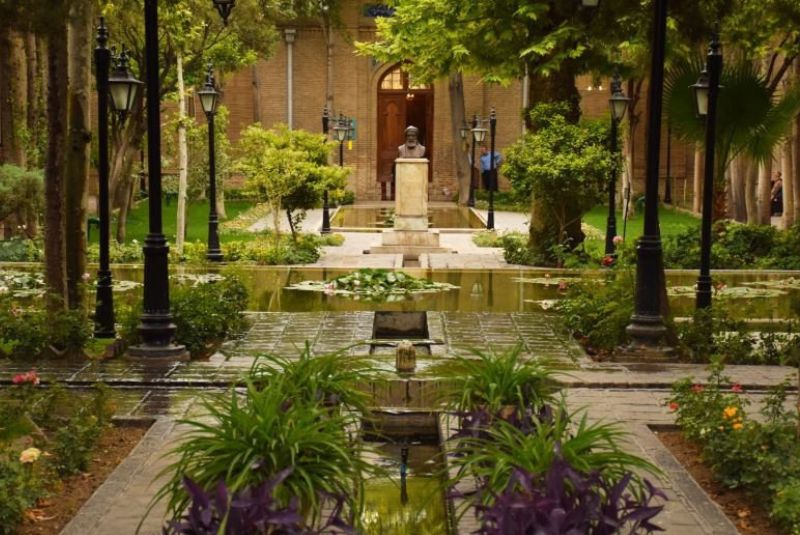
Over the course of more than half a century, many notable and famous individuals have been involved in studying and teaching in Negarestan Garden. A large number of the country's scholarly, literary, and artistic figures, such as Malek al-Shoara Bahar, Kazem Asar, Ali Akbar Dehkhoda, Badiozzaman Forouzanfar, Ali Naghi Vaziri, Jalal Homaei, Saeed Nafisi, Ebrahim Poordavood, Gholamhossein Sadiqi, Parviz Khanlari, Mohammad Moein, Mohammad Ibrahim Bastani Parizi, Ali Mohammad Kardan, and Mahmoud Hassabi are among these individuals. In a corner of the garden and in front of the library, you can see statues of some of Iran's great figures.
| Interested in visiting Tehran? Check out our Tehran tours to find the one that suits you best!
Architects and Painters of Negarestan Garden
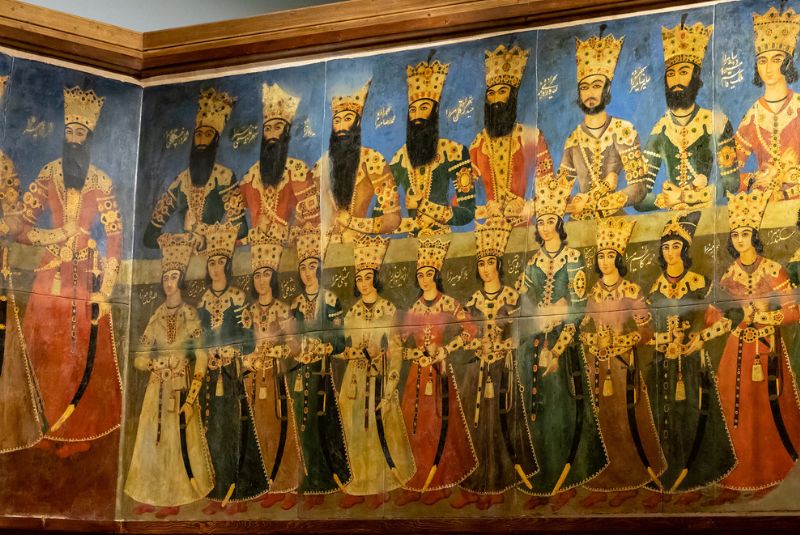
There have been numerous paintings on the walls and halls of Negarestan Garden, and the reason for naming this garden is also the existence of these paintings. Fath Ali Shah also had a keen interest in royal and eye-catching paintings; therefore, he ordered the painters to portray him in garments adorned with precious jewels.
One of the valuable and important images of Negarestan Garden is the Safa Salam Fathali Shah mural, which was located in the Salam Hall. The presence of this painting indicates that Negarestan was one of the gardens and palaces of the Qajar kings. At the order of Mozaffar al-Din Shah, a painting of the same size was drawn by Mosa'ur al-Molk and installed at the Ministry of Foreign Affairs at that time.
It is said that Mohammad Hassan Khan, a disciple of Agha Sadeq from the painters of the Karim Khan Zand period, was the creator of the shapes in this garden. Other architects and painters such as Abdullah Khan Baschi, the architect, and painter Baschi, and Aghajan Esfahani were also involved in the construction of Negarestan Garden.
| Suggestion: Iranian Art Museum Garden - Tehran Miniature Marvel
Notable Places to See in Negarestan Garden
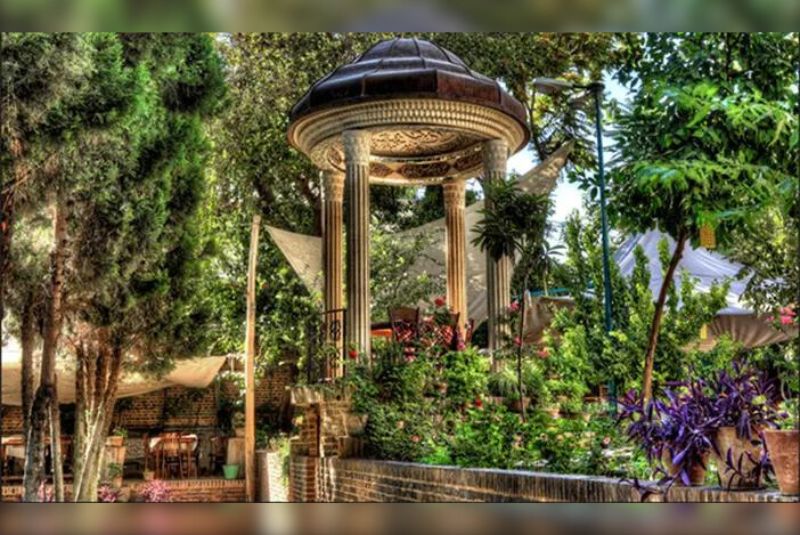
Negarestan Garden and museum offers visitors a captivating journey through various sections showcasing the rich heritage of Iran. Here are some of the important places to explore within the garden:
- Kamal ol-Molk Museum: Delve into the world of Qajar-era art with a visit to the Kamal ol-Molk Museum. Displaying remarkable paintings by renowned artists of the time, including Abolhassan Sediqi and Hassanali Vaziri, this museum allows visitors to admire the beauty and craftsmanship of Persian artistry.
- Safa Salam Fathali Shah Wall Mural: Witness a piece of history with the Safa Salam Fathali Shah wall mural. Depicting the grandeur of the Qajar dynasty, this mural showcases portraits of over a hundred Qajar princes, offering insights into the political and cultural landscape of the era.
- Jahangir Arjomand Miniature Sculptures: Marvel at the intricate miniature sculptures crafted by Jahangir Arjomand, a master sculptor. Using unconventional materials like unilite and paper, Arjomand's sculptures captivate viewers with their detailed craftsmanship and artistic expression.
- Sardis Ferdowsi Sarcophagus: Pay homage to the legendary Persian poet Ferdowsi with a visit to the Sardis Ferdowsi sarcophagus. Built by renowned French sculptor Lorenzi, this monument commemorates Ferdowsi's enduring legacy and contributions to Persian literature.
- Mahmoud Rouh al-Amini Documentary Photographs: Explore the cultural heritage of Iran through the lens of Mahmoud Rouh al-Amini's documentary photographs. Capturing scenes of wheat cultivation and everyday life in the Koohbanan region of Kerman, these photographs offer valuable insights into Iranian society.
- Molok al-Shoara Bahar Collection: Immerse yourself in the literary legacy of Molok al-Shoara Bahar with a visit to his collection. Featuring historical photos, digital documents, and manuscripts, this collection preserves the life and works of the renowned poet for future generations.
- Paintings by Ali Esfahanian: Admire the exquisite paintings of Ali Esfahanian, a master of Iranian traditional arts. Known for his miniature and marquetry works, Esfahanian's paintings showcase a harmonious blend of traditional techniques and modern aesthetics.
- Manir Formanfarmaian Hall: Step into the world of contemporary art with a visit to Manir Formanfarmaian Hall. Displaying the works of the pioneering Iranian artist, this hall celebrates Formanfarmaian's unique style characterized by mirror work, geometric shapes, and reverse glass painting.
- Tile Room: Experience the beauty of Persian tile work in the Tile Room of Negarestan Garden. Featuring ornate designs dating back to the 13th and 14th centuries AH, this room offers a glimpse into the rich architectural heritage of Iran.
- Gholamali Malul's Engraved Silverware and Carpets: Marvel at the exquisite craftsmanship of Gholamali Malul's engraved silverware and carpets. Showcasing pieces dating back to the Qajar period, this exhibition highlights the intricate beauty of Persian metalwork and carpet weaving.
- Paintings by Fathollah Ebad: Appreciate the artistic talent of Fathollah Ebad with a visit to his collection of paintings. Featuring 30 precious artworks, this collection offers insights into Ebad's mastery of fine arts and his contribution to Iranian cultural heritage.
- Hafezieh Shiraz Memorial: Pay tribute to the legacy of the great Persian poet Hafez with a visit to the Hafezieh Shiraz Memorial. Located near the entrance of Negarestan Garden, this memorial honors Hafez's enduring impact on Persian literature and culture.
- Negarestan Garden Library: The building of Negarestan Garden Library is part of the complex of buildings of the Higher Education School, located in the northeast corner of the garden.
The construction of this building was commissioned in 1936 by Ali Asghar Khan Hakim, the Minister of Education at the time, as part of an educational complex, to Nikolai Markov, a Russian architect.
Between 1941 and 1951, the library building underwent development, and the northern part was added as an extension to the library building. Parvin Etesami worked as a librarian in this library for a while.
| Discover: Tehran Book Garden
Negarestan Garden Ticket Price
Ticket Price for Iranians: 30,000 Tomans
Ticket Price for Foreign Tourists: 200,000 Tomans
The entrance ticket to Negarestan Garden is free for professors, students, and employees of Tehran University, and half-price for other student groups and university students with prior coordination.
Visiting Hours for Negarestan Garden
Visiting hours: 9:00 to 18:00
Negarestan Garden is closed on Tuesdays; however, visitors can still enjoy the green space and courtyard of Negarestan Garden and use the cafe and restaurant facilities.
| Suggestion: Best Restaurants in Tehran
Negarestan Garden Location
Negarestan garden is located north of Baharestan Square and near the Islamic Consultative Assembly. This garden extends from the west to Safi Ali Shah Street and from the east to Daneshsara Street. The Organization of National Planning is also located in the south of the garden.
How to Get to the Negarestan Garden
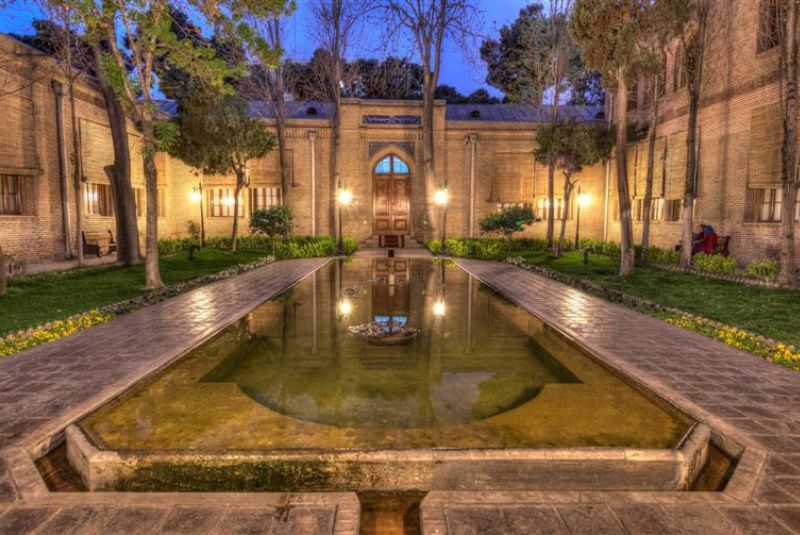
To reach Negarestan Garden, there are several convenient options. If you prefer using the metro, you can access the garden by alighting at either Darvazeh Shemiran or Baharestan stations on the dark blue line. From either station, a 7-10 minute walk will lead you to the garden's entrance.
Alternatively, you can opt for a bus route that passes through Baharestan Square, which serves as a helpful landmark for locating Negarestan Garden. Buses that pass through this square will provide easy access to the garden, as well as taxi services.
For those who enjoy walking and exploring the surroundings, Negarestan Garden is situated in a charming neighborhood, not far from Masoudieh Palace. You can embark on a leisurely stroll from the palace, immersing yourself in the modern Iranian lifestyle along the way.
| Suggestion: Shahzadeh Mahan Garden
Hotels Near Negarestan Garden
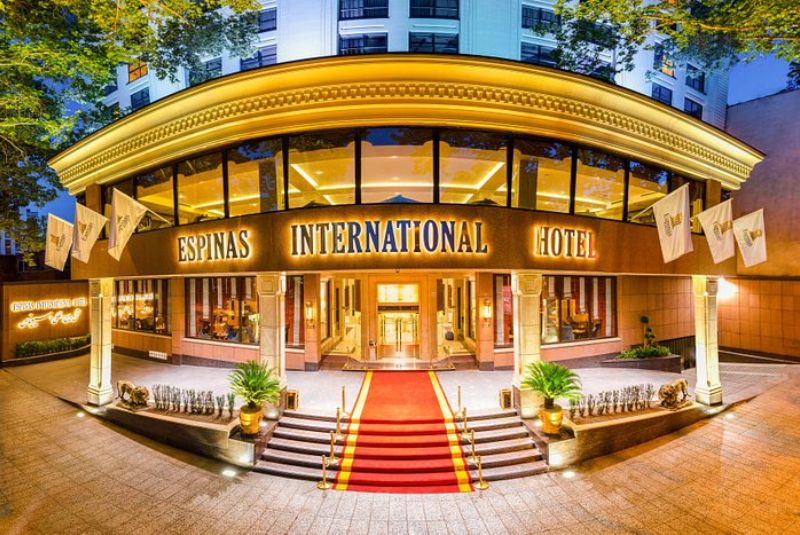
If you plan to stay in a hotel near Negarestan Museum Garden, you've chosen a convenient area to explore Tehran. You can easily access other parts of the city and its attractions from this neighborhood. Some of the hotels near Negarestan Garden include:
- Parsian Azadi Hotel
- Espinas Palace Tehran
- Esteghlal Hotel Tehran
- Espinas Boulevard Keshavarz Hotel Tehran
- Homa Hotel Tehran
- Wisteria Hotel Tehran
- Laleh Hotel Tehran
| Related: Best Hotels in Tehran + Price
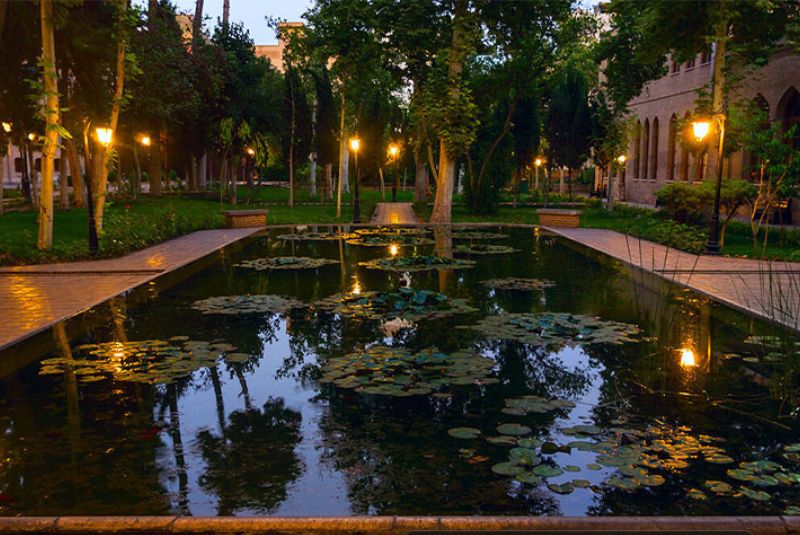
Bottom Line
Negarestan Garden is a captivating blend of history, culture, and natural beauty in Tehran. Its serene courtyards, picturesque ponds adorned with blue lotus flowers, and intriguing museums offer a delightful escape into Iran's rich heritage. From the exquisite sculptures to the intricate artworks, every corner tells a story of the past, inviting visitors to immerse themselves in its charm. Negarestan Garden promises an unforgettable experience for all who venture within its walls, leaving lasting memories of Tehran's cultural splendor.
Share your story!
Comment below and let us know about your Experience.
Your story inspires others!


Comment
Leave a Comment